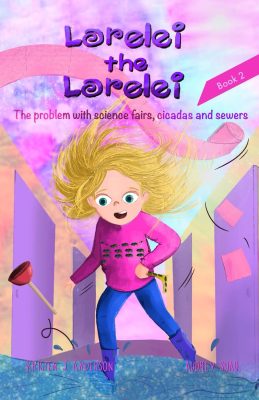|
Listen to or download this article:
|
 Three leprechauns, Molly, Shaun, and Dorker, have their lives turned upside down when a sinister figure returns to their peaceful village with greed and revenge on his mind. In Jonathan Uffelman’s middle-grade fantasy, Book of Leprechauns: The Lore Gatherers, they embark on a treacherous journey to recover their lost home.
Three leprechauns, Molly, Shaun, and Dorker, have their lives turned upside down when a sinister figure returns to their peaceful village with greed and revenge on his mind. In Jonathan Uffelman’s middle-grade fantasy, Book of Leprechauns: The Lore Gatherers, they embark on a treacherous journey to recover their lost home.
Shaun McClanahan struggles to support his daughter Molly as she fails a crucial test for young Lore Gatherers—a subculture of Leprechauns who respect the power of stories. Though he’s weighed down by his responsibilities as the protector of his village’s communal gold stash, Shaun tries to overcome his worrying nature by trusting Molly to check on the gold by herself, hopeful that she can prove her worth to the village.
But when Molly follows her father’s magical instructions to the letter, she discovers with horror that the treasure is missing, save one ancient Roman coin.
The theft means exile for both Molly and Shaun, as gold is the catalyst for Leprechaun magic. A dangerous and unwelcoming world awaits them beyond the village’s protection.
Shaun’s fear spirals into anger and mistrust towards Molly. The only Leprechaun who tries to speak on her behalf is Dorker—a gangly young teenager with a great big heart who has a great big crush on Molly. However, his efforts only serve to get him caught up in their banishment, where his reservoir of foolish behavior adds a lightness to their magical exile.
In the shadows of the forest, they are small and vulnerable creatures. Shaun scrambles desperately to put together a plan to reclaim the stolen gold across time and space. If, of course, Poor Reynard the hungry fox doesn’t catch them first.
Meanwhile, Molly rails against the injustice of it all—the village’s draconian laws of exile, her own father refusing to believe she told the truth about what happened, and how Shaun refuses to trust her again.
On the trail to find the coins, our Leprechauns travel to Ancient Rome, hoping to connect Julius Caesar, whose image on the coin is the only hint they have, with the location of the missing coins. While Shaun’s magic can get them to the past, there’s no telling what—or who—might be waiting for them on the other side.
Uffelman creates a strong fantastical atmosphere with his whimsical writing style, reminiscent of Lemony Snicket and Terry Pratchett.
Book of Leprechauns is presented as an account of Lore Keeper history, using footnotes and references to other in-universe texts that pull readers into the setting.
Filled with a lighthearted mix of dream logic, fairytale whimsy, and even some science fiction, the reader will find themselves laughing at even morose moments. Poor Reynard, the hungry fox, contemplates his place in the world as he follows the heroes on their journey, and Dorker even tries to help by picking up Latin but finds he has much more of an aptitude for the clucks of the strong-willed chicken, Gladys.
The highlight of Book of Leprechauns is its cast of characters, each one unique and fleshed out in their motivations and actions.
Evocative descriptions and distinctive banter bring these characters to life. Readers come to understand what drives and troubles them, giving interesting depth to even those who start as opponents, including Poor Reynard, Lucius the Roman legionary, and Julius Caesar himself.
Readers will eagerly peer through the characters’ clever lies and half-truths to find the facts behind unreliable narrators. This tactic emphasizes the focus Lore Gatherers put on adding trickery to their own tales.
Among these characters, Shaun and Molly go through a powerful emotional journey as they struggle to understand each other as family.
Shaun lets his fear and anger create a gulf between him and his daughter. This is widened further by his refusal to talk openly about Molly’s late mother as he wrestles with guilt over her death. Molly wants desperately to be closer to Shaun and aims to prove herself by handling the responsibilities of their enchanted life. But Shaun slips deeper into a whirlpool of panic as their situation grows more dire.
Shaun must find the courage to trust Molly again, which is the only thing that can repair their relationship.
Molly herself is an exciting and relatable protagonist who has much to learn about the world and herself. Young readers will love her passion and fire at the journey’s beginning. Yet as those flames turn to anger, they threaten to consume more than she bargained for.
Molly starts to learn that people are often much more complicated than she first gives them credit for. While anger might be a powerful force, she must push herself to empathize with the stories of those around her to truly do good for anyone—including herself.
At its heart, Book of Leprechauns is a story about seeing the good in people.
The heroes must all learn to trust not only each other, but themselves to achieve their mission. To get home they will need to move beyond their own fears and limitations.
After all, Lore Gatherers know well the power storytellers have in shaping the world.











Leave A Comment